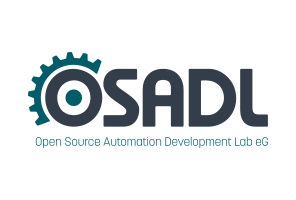Real Time Linux Workshops
1999 - 2000 - 2001 - 2002 - 2003 - 2004 - 2005 - 2006 - 2007 - 2008 - 2009 - 2010 - 2011 - 2012 - 2013 - 2014 - 2015
13th Real-Time Linux Workshop from October 20 to 22 at the Faculty of Electrical Engineering, Czech Technical University in Prague
Announcement - Hotels - Directions - Agenda - Paper Abstracts - Presentations - Registration - Abstract Submission - Sponsoring - Gallery
Application of RT-Preempt Linux and sercos III for real-time simulation
Michael Abel, University of Stuttgart
Luis Contreras, University of Stuttgart
Peter Klemm, University of Stuttgart
This paper presents the application of RT_Preempt Linux in a virtual start-up scenario. In this scenario, a proprietary Programmable Logic Controller (PLC) is connected to a real-time simulation model. The model is located on a separate Linux simulation computer which simulates for example the hardware of a production machine. Furthermore, the controller and the simulation computer are connected through the sercos III automation bus. The simulation computer uses a sercos III PCI card as communication hardware together with a user space IO (UIO) driver. This allows execution of the simulation model and the sercos III driver as real-time processes on the simulation computer. The sercos III driver was adapted to imitate the bus-interface of a custom sercos III bus-coupler to provide easy integration into the PLC engineering system. Moreover, variables in the PLC can be coupled to input and output values of the simulation model. With this virtual start-up method, it is possible to reduce the time to market of a machine, since writing and testing the PLC code for the controller can be done in parallel to the construction of the hardware.




